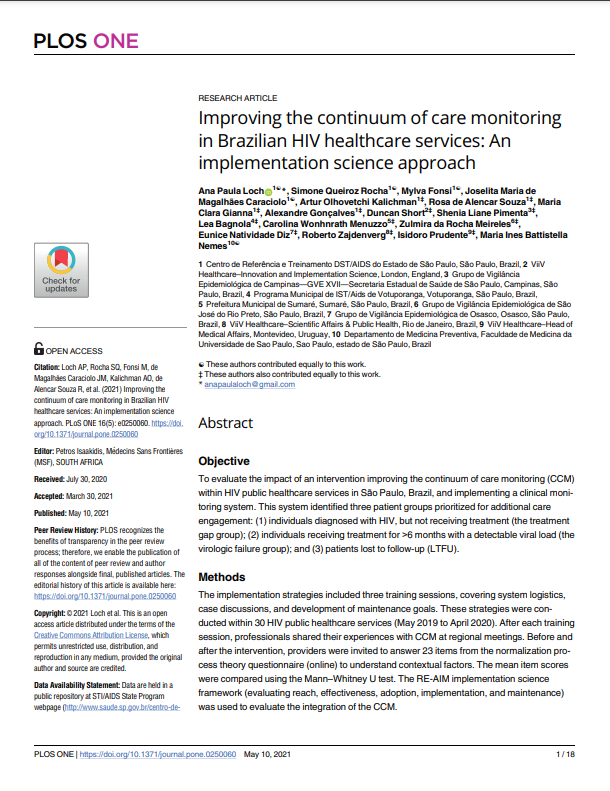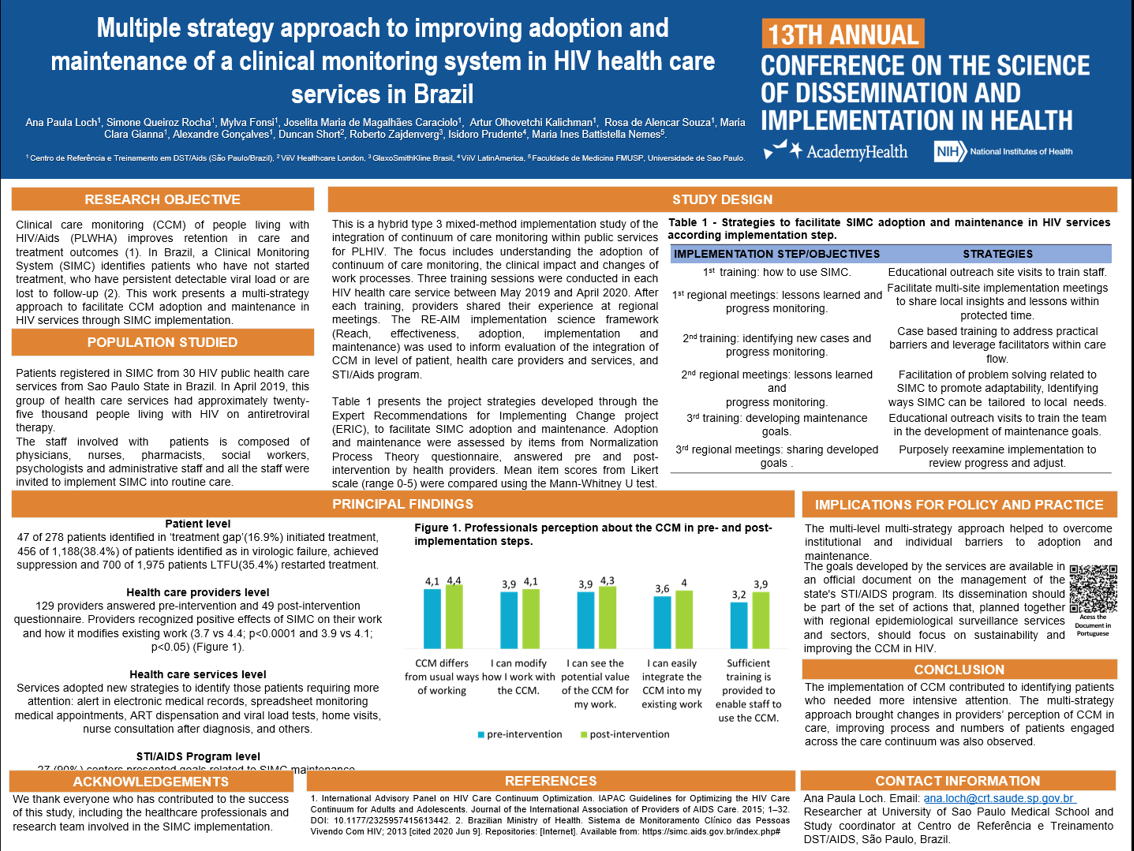IMPROVING TRACKING AND RETENTION IN CARE OF PLHIV IN SÃO PAOLO
Background
In Brazil, the Clinical Monitoring System (Sistema de Monitoramento Clinico [SIMC]) was developed in 2013 and made available by the Ministry of Health to all public healthcare services performing follow-up of PLHIV. SIMC helps identify 3 salient patient groups in outpatient settings: (a) patients with CD4/viral loads tests and not in treatment; (b) patients in treatment 6 months with a detectable viral load; and (c) patients lost to follow-up.
The São Paulo State STI/Aids Program Coordination has been promoting the implementation and use of SIMC but due to cultural and organizational barriers in the healthcare network, the implementation and scale up has been difficult.

Design
The implementation strategies included three training sessions, covering system logistics, case discussions, and development of maintenance goals. These strategies were conducted within 30 HIV public healthcare services (May 2019 to April 2020). After each training session, professionals shared their experiences with CCM at regional meetings. Before and after the intervention, providers were invited to answer 23 items from the normalization process theory questionnaire (online) to understand contextual factors. The mean item scores were compared using the Mann–Whitney U test. The RE-AIM implementation science framework (evaluating reach, effectiveness, adoption, implementation, and maintenance) was used to evaluate the integration of the CCM.
Primary objective
- To evaluate the impact of an intervention to improve the continuum of care monitoring (CCM) within HIV public healthcare services in São Paulo, and implement SIMC.
Results
In the study, 47 (19.3%) of 243 patients with a treatment gap initiated treatment, 456 (49.1%) of 928 patients with virologic failure achieved suppression, and 700 of 1552 (45.1%) LTFU patients restarted treatment. Strategies for the search and reengagement of patients were developed and shared. Providers recognized the positive effects of CCM on their work and how it modified existing activities (3.7 vs. 4.4, p<0.0001, and 3.9 vs. 4.1, p<0.05); 27 (90%) centres developed plans to sustain routine CCM.
Conclusion
Implementing CCM helped identify patients requiring more intensive attention. This intervention led to changes in providers’ perceptions of CCM and care and management processes, which increased the number of patients engaged across the care continuum and improved outcomes.
Collaborators
Dr. Maria Ines Battistella Nemes
Dr Ana Paula Loch
Setting
Fundação Faculdade De Medicina
Location
Brazil
Duration
May 2019 – Jul 2020
Category
Retention in Care and Adherence
Key study materials
RELATED STUDIES
USA
The Implementation Science team worked to evaluate the patient experience in the MORE program and evaluate MORE’s impact on ART adherence among HIV positive medical patients of Whitman-Walker Health who have inconsistent attendance to appointments.
USA
As part of this project, financial incentives were used to engage and retain people living with HIV with the goal of contributing to viral suppression in the Baton Rouge, LA area.
USA
The RISE study was a cross-sectional survey designed to obtain an up-to-date understanding of the impact living with HIV has on patients’ lives in the US.
Study focus areas
Our implementation research projects have a global reach and focus on improving the HIV prevention and care continuum.

NP-GBL-HVX-WCNT-220049 October 2023
Adverse events should be reported. Reporting forms and information can be found at yellowcard.mhra.gov.uk or search for MHRA Yellowcard in the Google Play or Apple App store. Adverse events should also be reported to GlaxoSmithKline on 0800 221441.
If you are from outside the UK, you can report adverse events to GSK/ViiV by selecting your region and market, here.


